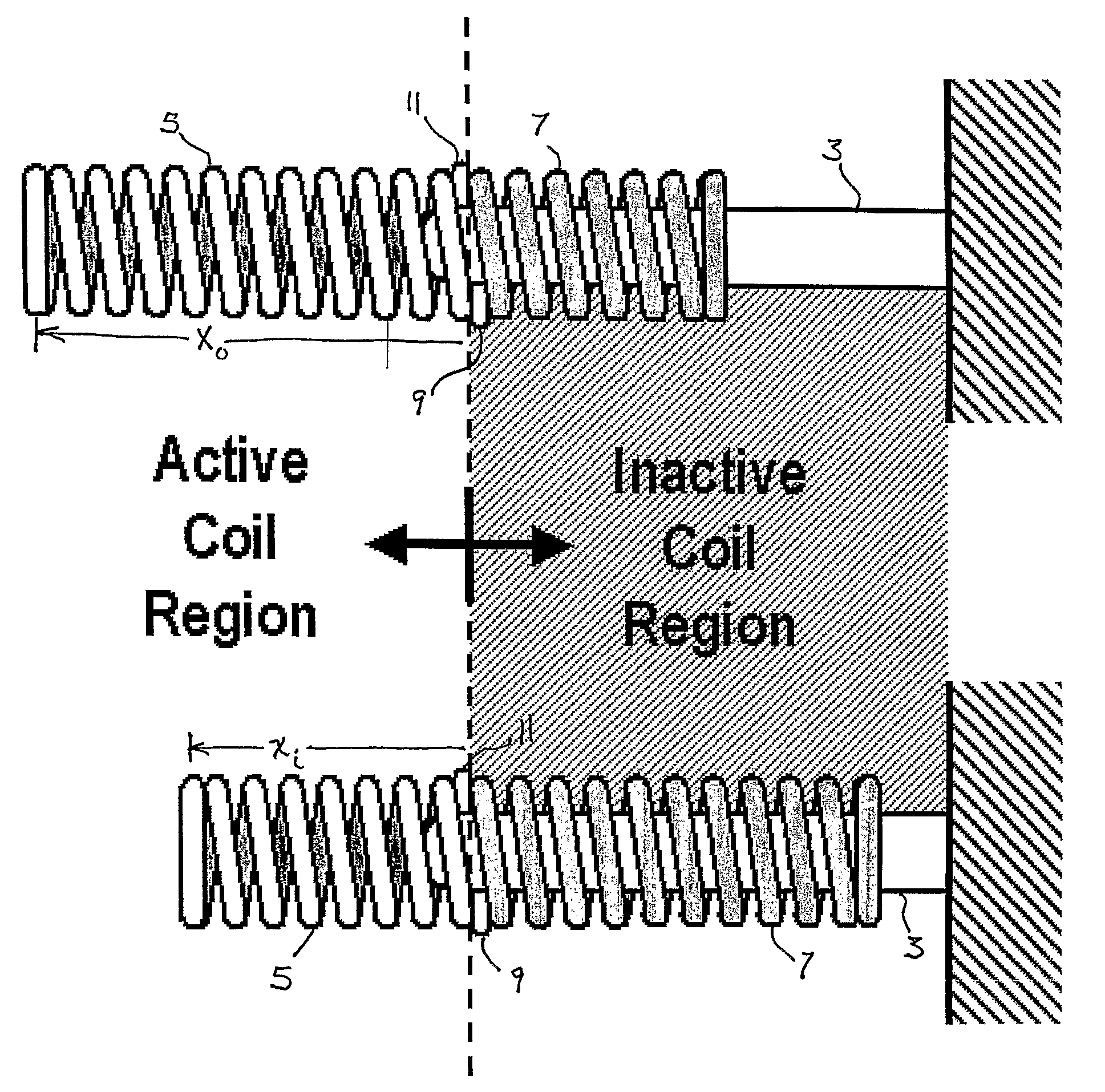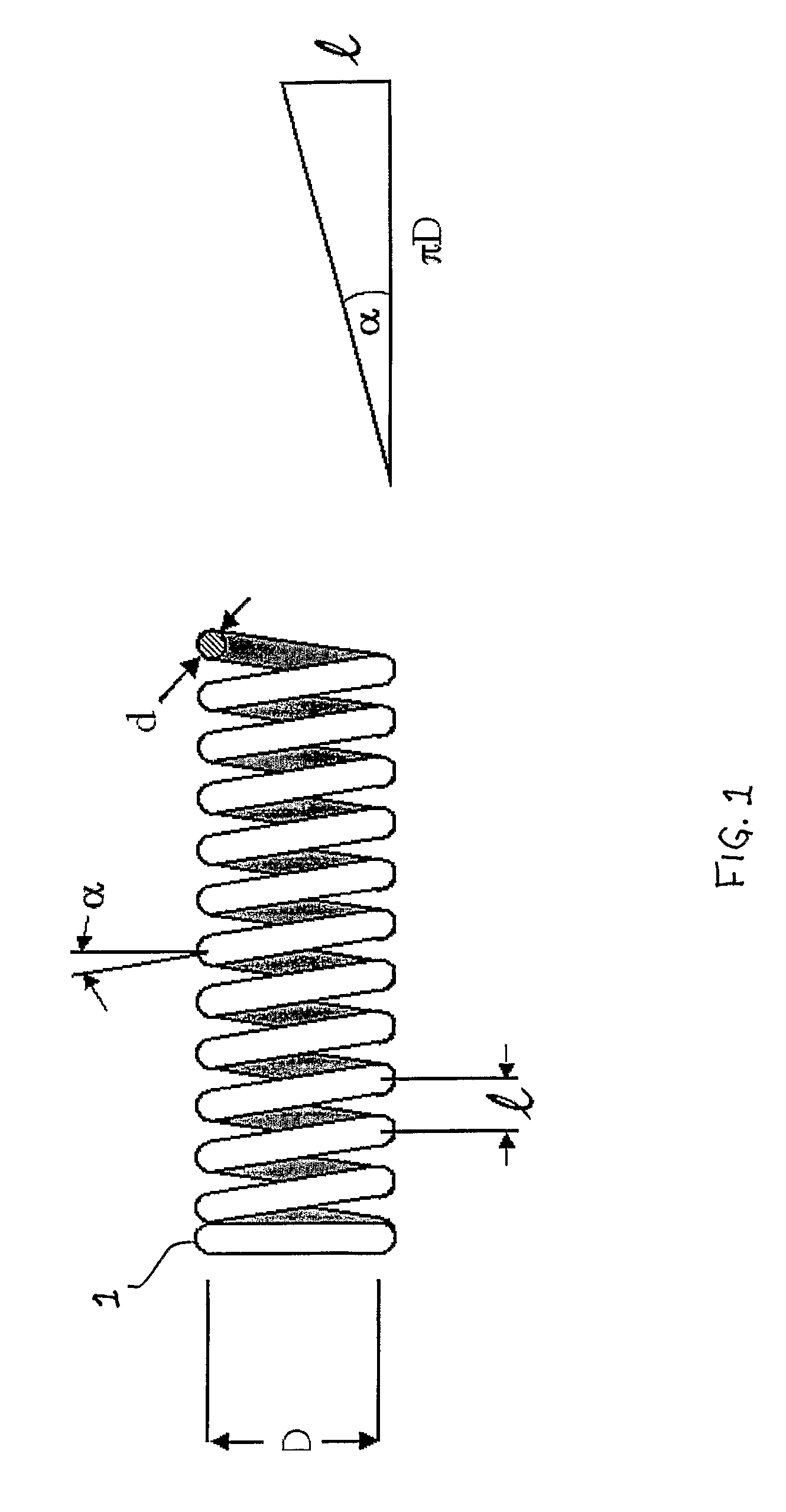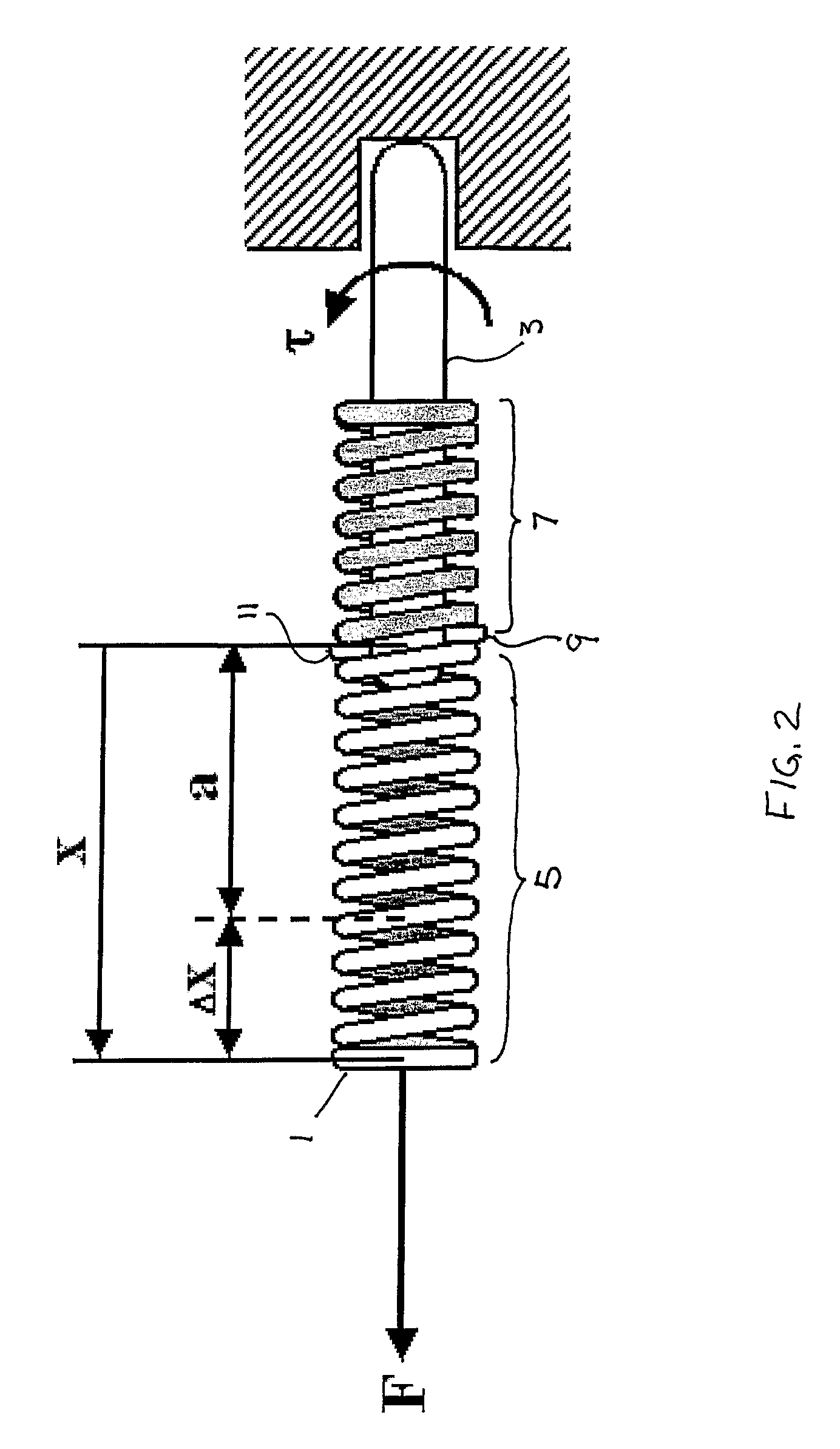Adjustable stiffness jack spring actuator
a technology of jack spring actuator and adjustable stiffness, which is applied in the direction of spring/damper design characteristics, wound springs, springs/dampers, etc., can solve the problems of weight, power consumption and again safety, and difficulty in storing electrical energy, so as to modulate the stiffness of kinematic joints and increase the bending stiffness
- Summary
- Abstract
- Description
- Claims
- Application Information
AI Technical Summary
Benefits of technology
Problems solved by technology
Method used
Image
Examples
Embodiment Construction
[0082]The Jack Spring of the present invention is a mechanical element that is based upon the concept of structure-controlled stiffness. The structure of the Jack Spring is dynamically changed to tune the mechanical system. A basic Jack Spring mechanism can be described as a helical or coil spring that can adjust its number of active coils and translate in an inward or outward motion. The use of such a Jack Spring mechanism is comparable to that of a linear screw. The difference between the Jack Spring and the linear screw concept is that the lead for a Jack Spring is variable based upon an imposed axial force.
[0083]To further explain the concepts of the present invention, the geometry of a helical spring is shown in FIG. 1. The parameters of a helical spring 1 are the coil diameter, D, wire diameter, d, lead angle, α, and lead, l. Another parameter related to the performance of an actuator spring is the number of coils, na. Along with material properties, such as shear modulus G, t...
PUM
 Login to View More
Login to View More Abstract
Description
Claims
Application Information
 Login to View More
Login to View More - R&D
- Intellectual Property
- Life Sciences
- Materials
- Tech Scout
- Unparalleled Data Quality
- Higher Quality Content
- 60% Fewer Hallucinations
Browse by: Latest US Patents, China's latest patents, Technical Efficacy Thesaurus, Application Domain, Technology Topic, Popular Technical Reports.
© 2025 PatSnap. All rights reserved.Legal|Privacy policy|Modern Slavery Act Transparency Statement|Sitemap|About US| Contact US: help@patsnap.com



